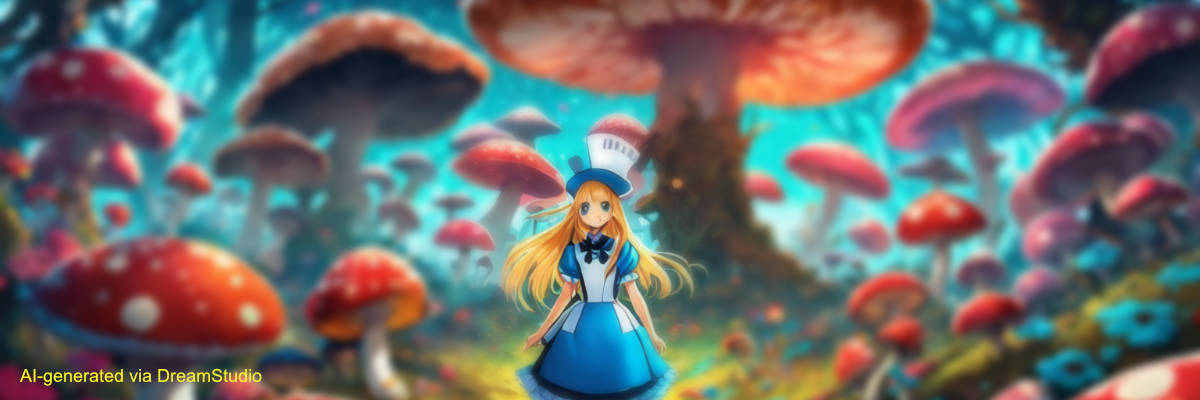We’ve been blessed with lots of rain around Casa Fire Ant (~7″ over the past five weeks, spread out nicely) and that has brought forth a diverse crop of mushrooms.
Mushrooms aren’t the most exciting inhabitants of the natural world, and I generally have a pretty hard time identifying them in order to know anything about them, but a couple of easily recognizable species suddenly appeared in and around our yard.
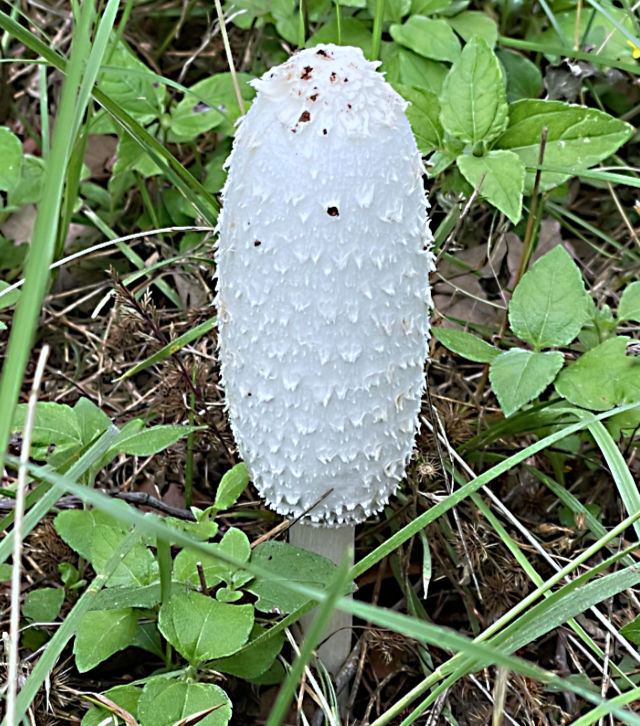
This is a shaggy mane mushroom, aka a shaggy ink cap or lawyer’s wig. It’s an edible mushroom, according to this article, and they come by that “inky” name honestly. As they age — and age quickly, they do — they deliquesce and release a blackish, ink-like substance. And because they deteriorate so quickly once picked, it’s recommended that if you intend to eat them, you should do that the same day they’re harvested. For the record, I didn’t pick this one, much less eat it.
According to the Wikipedia article linked above, the shaggy mane is sometimes confused with a species called the magpie mushroom (Coprinopsis picacea), which is unfortunate because it’s poisonous (although not deadly…probably).
And speaking of the magpie mushroom, this specimen was growing in the adjacent vacant lot.
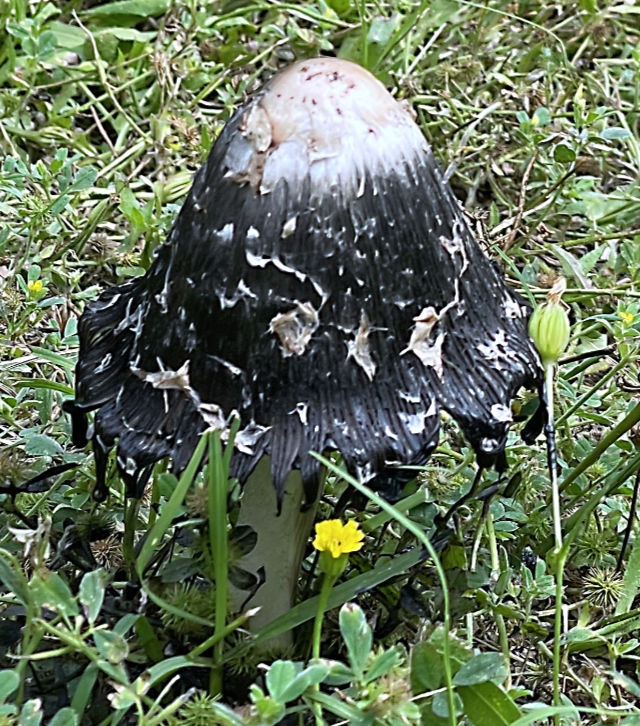
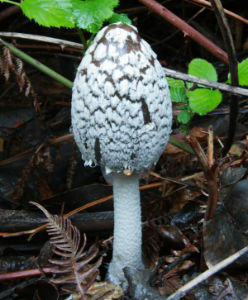
Photo via First Nature
Here’s a second magpie I found growing in the front courtyard.
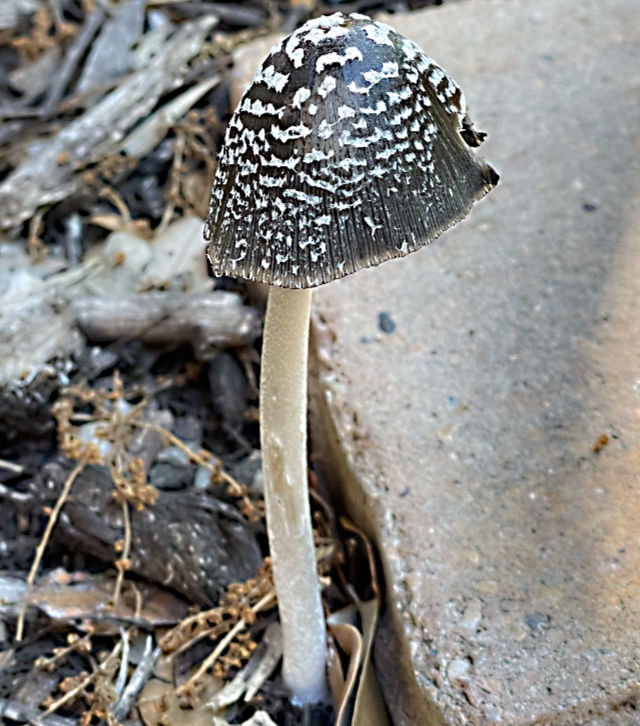
By the way, both the shaggy mane and the magpie belong to the same grouping referred to as ink caps because of their propensity to deliquesce — to dissolve or decompose into liquid. Here are some additional facts that I found interesting:
- The genus name, Coprinopsis, literally means living in dung in the original Greek.
- Shaggy manes are known to absorb heavy metals and are actually useful in remediating contaminated soils. So…
- …you’d better know the condition of the soil in which they’re growing if you plan on eating one, unless you’re partial to ingesting, say, mercury or plutonium.
- A related species, the Common inkcap (Coprinopsis atramentaria) is also known as Tippler’s Bane, which is a very descriptive and cautionary appellation because consuming alcohol within 48 hours before or after eating the mushroom can cause acute poisoning.
The question remains — how did these two somewhat similar but still uncommon mushrooms spring up in areas that haven’t before been homes to their species, to the best of my knowledge? Do their spores spread so widely or perhaps remain dormant for long periods of time, awaiting just the right conditions to sprout or hatch or whatever the heck spores do? I know there’s a scientific explanation for it and I hope somebody will share it.
And speaking of science…

Discover more from The Fire Ant Gazette
Subscribe to get the latest posts sent to your email.

